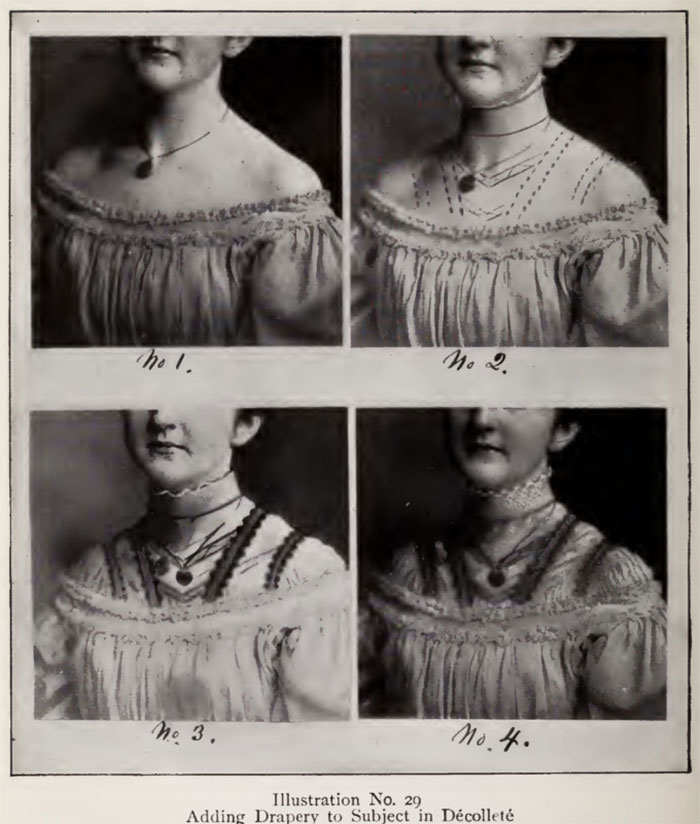
[ad_1]
All of us are familiar with the “Instagram vs Reality trend” that reveals the truth behind the so-called “Perfect” photos. Today, we have numerous apps through which we can retouch our photos to match the beauty standards being promoted on social media. But have you ever wondered how our ancestors managed to look so flawless without these apps? You can find that out in this book- “Complete self-instructing library of practical photography“.
This book exposes the truth about photo editing and retouching in the early 1900s. It contains many interesting images which prove that we have inherited body insecurities from our ancestors. Here are some examples portrayed in the book regarding the removal of imperfections from photography subjects during the early 20th century.
The book shows some amazing photography retouches that were performed in the early 1900s

Image credits: American school of art and photography

Image credits: American school of art and photography

Image credits: American school of art and photography
According to the book, “in delivering finished work to your customers, you do not hand them the photographic negatives, but the prints made from these negatives.” It further explained that “ in the early days of photography prints were made directly from the negative without any alteration because the wet-plate rendered softer effects than are obtainable with the ready prepared dry-plate.”

Image credits: American school of art and photography
As a result, the book says, “The imperfections were less visible, and at that time the general public were satisfied with an exact likeness of themselves.”
After the invention of dry-plate, “the defects in the human face became more apparent on the negative, and there arose a demand for a greater softening of the lines and a removal of the more objectionable imperfections.”
Knives or pencils were used to etch negatives. According to the book, “thick necks made thin, excessive drapery removed, crooked noses straightened, hair added, backgrounds altered”.

Image credits: American school of art and photography

Image credits: American school of art and photography

Image credits: American school of art and photography

Image credits: American school of art and photography

Image credits: American school of art and photography
The tools used for retouching were different from our modern apps. Photographers used magnifying glasses, lead, easel, etching knife, retouching fluid, spotting brush, negative varnish, etc.
“Reducing the size of stout subjects” are also mentioned in the retouching guidelines in the book

Image credits: American school of art and photography
Another thing that was common during the process of editing was ‘removal of freckles’

Image credits: American school of art and photography
Photographers were even able to straighten crossed eyes

Image credits: American school of art and photography
And opening closed eyes

Image credits: American school of art and photography
The book also contains instructions for reducing thick necks

Image credits: American school of art and photography
Removing a child from the picture was also a thing!

Image credits: American school of art and photography
The book also mentions adding ‘drapery’ to cover a woman’s skin through editing

Image credits: American school of art and photography
Even statues were brought to life!

Image credits: American school of art and photography
The post An Old Instructional Photography Book Shows How The “Instagram Vs Reality” Scene Worked In 1909 appeared first on DeMilked.
[ad_2]
Source link







Leave a Reply